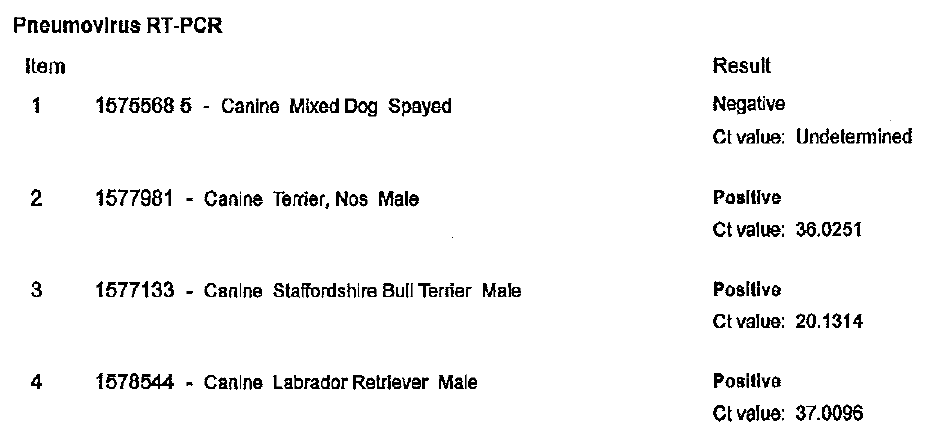Module 4: Polymerase Chain Reaction (PCR)
Module 4.4: Real-Life Example
Clinical Scenario
You are working in a large shelter and there has been a recent outbreak of kennel cough. You decide to run an RT-PCR Respiratory panel to get a better understanding of the potential respiratory pathogens in the shelter and aid in the development of isolation, control, and vaccination protocols. You chose 4 sick dogs to run the RT-PCR respiratory panel on. The following are results from the Pneumovirus RT-PCR data on those 4 sick dogs.

Reference interval interpretation
Cycle Threshold (Ct) |
Interpretation |
|---|---|
| Ct < 29 | Strong positive |
| Ct 30-37 | Moderate positivity |
| Ct >38 | Weak positive |
Knowledge check
Key Takeaways
- PCR is an amplification technique that allows for the detection of genetic material in very small amounts
- PCR testing is not always the best choice as an infectious disease screening tool
- This test is very sensitive and very specific
- High CT values may be an indicator of a false positive

